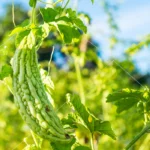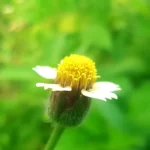How to Grow Gypsophila (Baby’s Breath) in India
Introduction to Gypsophila (Baby’s Breath)
Gypsophila, or “Baby’s Breath,” is a delicate and endearing flowering plant that has won the hearts of garden lovers all over the world. The ins and outs of cultivating and caring for Gypsophila in the special climate of India will be covered in detail in this extensive article. This article will provide you with the knowledge and methods to grow thriving Gypsophila plants, regardless of whether you are an expert gardener or a beginner wishing to add beauty to your landscape. Prepare to go off on an enthralling voyage of caring for these ethereal blooms.

1.1 What is Gypsophila?
Gypsophila is a genus of herbaceous perennial and annual plants that is a member of the Caryophyllaceae family. Small, delicate flowers on it, which are frequently used as fillers in floral arrangements, are what make it distinctive. Gypsophila is a well-liked option for weddings, bouquets, and many ornamental purposes because of its delicate white or pink blossoms, which make a lovely contrast when mixed with other flowers. Hindi Name for Gypsophila (Scientific Name) is चांदनी (Hindi Name) Baby’s Breath (Common English Name)
1.2 Why Grow Gypsophila in India?
Gypsophila cultivation is best suited to India’s varied climate and extensive horticulture heritage. You may enhance the allure of your outdoor areas, make mesmerising floral arrangements, and even support the regional floral industry by cultivating Gypsophila in your garden. You can take advantage of Gypsophila’s attractiveness and rejoice in its lovely presence in your surroundings if you have the necessary skills and expertise.
1.3 Benefits of Growing Gypsophila
Beyond its beauty, Gypsophila cultivation has many other advantages. Pollinators, like butterflies and bees, who are essential to maintaining a healthy ecology, are drawn to these delicate blooms. The desire for Gypsophila’s attractive appearance in bouquets and floral arrangements is also a potential source of money for flower farmers. Gypsophila cultivation can potentially generate a stable source of income while also improving the aesthetic of your surroundings.
1.4 Best Varieties of Gypsophila for Indian Climate
Gypsophila cultivars should be chosen with the local climate and growing circumstances in mind for cultivation in India. Gypsophila paniculata, Gypsophila elegans, and Gypsophila muralis are a few suitable varieties. These species are adaptable to many Indian locations, offering gardeners a variety of alternatives. You can choose the ideal Gypsophila for your own gardening preferences because each variety has distinctive qualities like as flower size, growth habit, and bloom duration.
Climate and Soil Requirements
Gypsophila grows well in particular climate zones and soil types. For cultivation to be successful, it is essential to understand these needs. Let’s examine the ideal weather conditions for Gypsophila and the steps that must be taken to prepare the soil for optimum growth and blooming.
2.1 The Best Climate for Growing Gypsophila
In areas with a mild and temperate environment, gypsophila grows well. During the growing season, it prefers moderate temperatures between 15°C and 25°C (59°F and 77°F). But to some extent, it can withstand both greater and lower temperatures. Gypsophila can be grown successfully throughout India, including the northern plains, the foothills of the Himalayas, and some areas of the southern subcontinent. It’s crucial to choose the right Gypsophila kinds based on the unique climatic features of your area.
2.2 Soil Preparation and Composition
Correct soil preparation is crucial to ensuring robust development and a profusion of blooms. Gypsophila flourishes in organically rich, well-draining soil. Start by clearing the planting area of any weeds, pebbles, or other objects. With a garden fork or tiller, loosen the soil to a depth of 8 to 10 inches. To increase the fertility and drainage of the soil, add organic compost or well-rotted manure. This organic addition also helps soil retain moisture, which is useful when it’s dry out. Aim for a loamy soil condition that promotes root aeration while facilitating easy water penetration.
2.3 pH Level and Drainage Considerations
Gypsophila prefers a pH of 7.0 to 7.5 in its soil, which is somewhat alkaline. To find out how acidic or alkaline the soil is, test it with a pH metre or a soil testing kit. Lime can assist raise the pH level to the optimum range if it is too low. Gypsophila plants require good drainage because they are prone to root rot in standing water. Consider adding coarse sand or perlite to your soil to ease poor drainage. Remember that roots may breathe in well-draining soil, eliminating soggy circumstances that can cause stress and illness in plants.
Choosing and Sourcing Gypsophila Seeds
Selecting high-quality Gypsophila seeds is crucial for successful germination and growth. In this section, we will explore the key considerations when choosing and sourcing Gypsophila seeds.
3.1 Selecting High-Quality Gypsophila Seeds
When selecting Gypsophila seeds, keep the following factors in mind to ensure you acquire high-quality seeds:
- Freshness: Opt for seeds that are relatively fresh, as older seeds may have lower germination rates.
- Viability: Look for seeds with a high viability rate, which indicates the likelihood of successful germination and growth.
- Reputable sources: Purchase seeds from trusted suppliers known for their quality and reliability.
- Variety selection: Choose the Gypsophila variety that best suits your preferences and growing conditions.
3.2 Understanding Seed Germination and Viability
Before embarking on the germination process, it is essential to understand the factors that influence seed germination and viability. Here are some key points to keep in mind:
- Temperature requirements: Gypsophila seeds generally require a consistent temperature of around 20°C to 25°C (68°F to 77°F) for optimal germination.
- Light conditions: Gypsophila seeds are generally light-sensitive and should be sown shallowly, barely covered with soil or vermiculite.
- Moisture control: Keep the growing medium evenly moist during the germination process, but avoid overwatering, as it can lead to rotting.
- Germination period: Gypsophila seeds typically germinate within 10 to 14 days under favorable conditions.
Germinating Gypsophila Seeds
Now that you have your high-quality Gypsophila seeds, it’s time to initiate the germination process. Follow these steps to maximize your chances of successful seed germination.
4.1 Preparing Seed Trays or Pots
Prepare the seed trays or pots to provide an optimal environment for seed germination:
- Select containers: Choose clean seed trays or pots with drainage holes to prevent waterlogging.
- Fill with seed-starting mix: Fill the containers with a sterile seed-starting mix, which provides good aeration and drainage.
- Moisten the mix: Moisten the seed-starting mix before sowing the seeds, ensuring it is uniformly damp but not soaking wet.
4.2 Planting Gypsophila Seeds
Follow these steps to plant Gypsophila seeds:
- Sow the seeds: Place the Gypsophila seeds on the surface of the moist seed-starting mix, spacing them evenly.
- Cover lightly: Sprinkle a thin layer of vermiculite or seed-starting mix over the seeds to lightly cover them.
- Mist or water gently: Use a fine mist sprayer or a gentle stream of water to moisten the newly sown seeds without disturbing them.
4.3 Caring for Germinating Seeds
To ensure optimal conditions for germination, provide the following care to your Gypsophila seeds:
- Temperature control: Place the seed trays or pots in a warm location with a consistent temperature of around 20°C to 25°C (68°F to 77°F).
- Provide indirect light: Gypsophila seeds generally require indirect light for germination. Place them in a well-lit area away from direct sunlight.
- Maintain moisture: Keep the seed-starting mix consistently moist but not waterlogged. Mist the surface gently whenever it appears dry.
4.4 Common Issues and Troubleshooting
While germinating Gypsophila seeds, you may encounter certain issues. Here are some common problems and their potential solutions:
- Damping off: If seedlings suddenly wilt and collapse at the soil level, it may indicate damping off, a fungal disease. Ensure proper ventilation and avoid overwatering.
- Fungal infections: If you notice mold or fungal growth on the seed-starting mix, reduce moisture levels and improve air circulation to prevent fungal infections.
- Poor germination: Low germination rates may be due to old or low-quality seeds. Ensure you are using fresh, high-quality seeds from reputable sources.
By following these steps and troubleshooting tips, you can increase your chances of successful germination and seedling establishment.
Transplanting Gypsophila Seedlings
Once your Gypsophila seedlings have grown and developed a sturdy root system, it’s time to transplant them into their permanent location. Follow these guidelines for successful transplanting.
5.1 When to Transplant Seedlings
Transplant Gypsophila seedlings when they have reached a height of 2 to 3 inches and have developed a few sets of true leaves. This is typically around 4 to 6 weeks after sowing the seeds.
5.2 Preparing the Planting Site
Prepare the planting site to provide an optimal growing environment for Gypsophila:
- Choose a sunny location: Gypsophila thrives in full sun, so select a site that receives at least 6 to 8 hours of direct sunlight each day.
- Soil preparation: Ensure the soil is well-draining and rich in organic matter. Incorporate compost or well-rotted manure before transplanting to improve fertility and moisture retention.
5.3 Transplanting Techniques and Best Practices
Follow these steps to transplant Gypsophila seedlings:
- Water the seedlings: Thoroughly water the seedlings a few hours before transplanting to ensure they are well-hydrated.
- Dig planting holes: Dig holes in the prepared planting site that are slightly larger than the root ball of the seedlings, spaced according to the specific variety’s recommended spacing.
- Gently remove seedlings: Carefully remove the seedlings from the seed tray or pots, taking care not to damage the roots.
- Plant seedlings: Place each seedling into a planting hole, ensuring the top of the root ball is level with the surrounding soil.
- Backfill and firm soil: Fill the hole with soil, gently firming it around the seedling to eliminate air pockets.
- Water thoroughly: After transplanting, water the seedlings thoroughly to settle the soil and promote root establishment.
5.4 Watering and Mulching for Seedling Establishment
Proper watering and mulching are crucial for the establishment of transplanted Gypsophila seedlings:
- Watering: Keep the soil evenly moist but not waterlogged during the initial weeks after transplanting. Water deeply whenever the top inch of soil feels dry.
- Mulching: Apply a layer of organic mulch, such as straw or wood chips, around the base of the seedlings. Mulching helps conserve soil moisture, suppress weed growth, and regulate soil temperature.
Gypsophila Care and Maintenance
To ensure healthy growth and abundant blooms, it’s essential to provide proper care and maintenance to your Gypsophila plants.

6.1 Watering and Irrigation Needs
Gypsophila plants have moderate water needs. Follow these guidelines for watering:
- Regular watering: Water the plants deeply once or twice a week, providing enough moisture to penetrate the root zone.
- Avoid overwatering: Gypsophila is susceptible to root rot if the soil remains excessively wet. Allow the soil to dry out slightly between watering sessions.
6.2 Fertilizer Requirements and Application
Gypsophila plants benefit from regular fertilization to promote healthy growth and abundant blooms:
- Balanced fertilizer: Apply a balanced, slow-release fertilizer with an NPK ratio of 19-19-19 or similar. Follow the manufacturer’s instructions for application rates.
- Timing: Begin fertilizing when the plants start actively growing in spring and continue at regular intervals throughout the growing season.
6.3 Pruning and Pinching Techniques
Pruning and pinching help shape and maintain Gypsophila plants, resulting in bushier growth and increased flower production:
- Pinching: Pinch off the top few inches of the main stem when the plants reach a height of 6 to 8 inches. This encourages branching and fuller growth.
- Deadheading: Remove spent flowers regularly to promote continuous blooming and prevent self-seeding.
6.4 Managing Pests and Diseases in Gypsophila
Gypsophila plants are generally resistant to pests and diseases. However, certain issues can still arise. Here are some common problems and their solutions:
- Aphids: Control aphids by spraying the affected plants with a strong stream of water or by using insecticidal soap as directed.
- Powdery mildew: Powdery mildew can occasionally affect Gypsophila. Provide good air circulation, avoid overhead watering, and apply fungicides if necessary.
Harvesting Gypsophila Blooms
Gypsophila blooms are prized for their delicate appearance and long-lasting qualities. Here’s what you need to know about harvesting Gypsophila:
7.1 Identifying the Right Time to Harvest
Harvest Gypsophila blooms when the flowers are fully open but before the individual flowers begin to drop or fade. The best time to harvest is early in the morning when the blooms are at their freshest.
7.2 Harvesting Techniques for Long-Lasting Blooms
Follow these steps for proper Gypsophila harvesting:
- Select the stems: Choose stems with fully open flowers and no signs of wilting or discoloration.
- Cut at the base: Use sharp, clean shears to cut the stems at the base, just above the point where they emerge from the plant.
- Bundle and secure: Gather a small bunch of stems and secure them together with a rubber band or string.
- Place in water: Immediately place the harvested Gypsophila stems in a bucket or vase filled with clean water.
7.3 Post-Harvest Care and Preservation Tips
To ensure the longevity of Gypsophila blooms, follow these post-harvest care tips:
- Trim the stems: Trim the bottom inch of each stem at a 45-degree angle before placing them in water.
- Use floral preservative: Add a floral preservative to the water in the vase to nourish the flowers and extend their vase life.
- Change the water: Regularly change the water in the vase every two to three days to prevent bacterial growth and maintain freshness.
Utilizing Gypsophila in Floral Arrangements
Gypsophila is a versatile flower that adds a delicate touch to floral arrangements. Here are some ideas for using Gypsophila in Indian floral designs:
8.1 Creative Ways to Use Gypsophila in Indian Floral Designs
- Garlands and flower strings: Incorporate Gypsophila in traditional Indian garlands and flower strings, pairing it with vibrant blossoms for a captivating contrast.
- Mandap decorations: Use Gypsophila as a filler flower to add volume and texture to mandap decorations, enhancing the overall beauty of the ceremonial space.
- Centerpieces and bouquets: Create elegant centerpieces and bouquets by combining Gypsophila with roses, lilies, or other focal flowers.
8.2 Combining Gypsophila with Other Flowers
Gypsophila pairs well with a wide range of flowers, enhancing their beauty and adding a delicate touch. Consider combining Gypsophila with:
- Roses: Create romantic arrangements by pairing Gypsophila with roses in various colors.
- Carnations: Combine Gypsophila with carnations for a classic and timeless look.
- Lisianthus: Mix Gypsophila with lisianthus for a dreamy and ethereal arrangement.
8.3 DIY Floral Arrangement Ideas with Gypsophila
If you enjoy crafting your own floral arrangements, consider these DIY ideas using Gypsophila:
- Baby’s breath wreath: Create a charming wreath using dried Gypsophila, perfect for adding a rustic touch to your home decor.
- Gypsophila in mason jars: Arrange Gypsophila stems in small mason jars tied with colorful ribbons for a simple yet delightful centerpiece.
Frequently Asked Questions (FAQs)
9.1 Can Gypsophila Be Grown Indoors in India?
Yes, Gypsophila can be grown indoors in India. Provide ample sunlight or fluorescent lighting, well-draining potting soil, and regular watering to ensure successful indoor cultivation.
9.2 How Long Does It Take for Gypsophila to Bloom?
The time it takes for Gypsophila to bloom depends on various factors, including the variety and growing conditions. Generally, Gypsophila plants start to bloom around 10 to 12 weeks from sowing the seeds.
9.3 Are There Any Specific Gypsophila Diseases to Watch Out for in India?
While Gypsophila is relatively disease-resistant, occasional issues like powdery mildew can occur. Monitor the plants for signs of diseases, ensure proper air circulation, and promptly address any problems with appropriate treatments.
10. Conclusion
In conclusion, Gypsophila cultivation in India can be a rewarding experience. By following the guidelines for transplanting seedlings, providing proper care and maintenance, harvesting blooms at the right time, and utilizing Gypsophila in floral arrangements, you can enjoy the delicate beauty of this versatile flower. With patience and attention to detail, you’ll be able to create stunning floral displays that captivate the senses. Remember to adapt the techniques and practices according to the specific variety of Gypsophila you are growing, and always stay attentive to the needs of your plants for successful cultivation. Happy gardening!
For the best farming techniques, products, and guidance, you can always visit www.shehrikisaan.com, a platform dedicated to providing farmers with high-quality agricultural products, expert guidance, and access to the latest farming technologies. Join us in the mission of promoting sustainable farming practices and building a better future for farmers and the environment.








